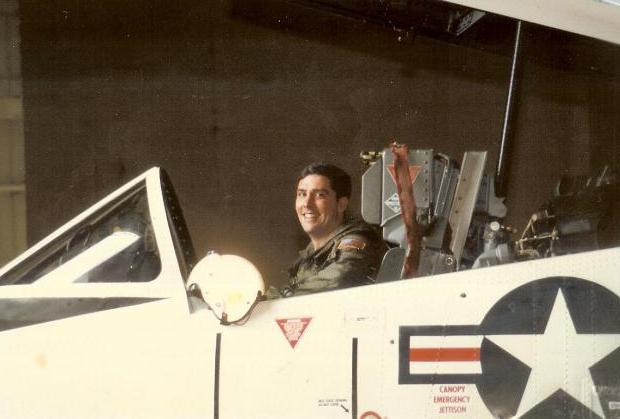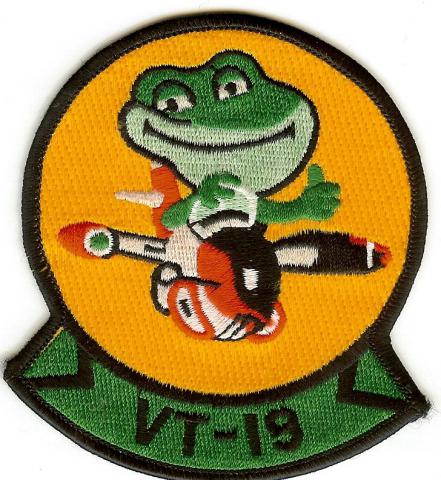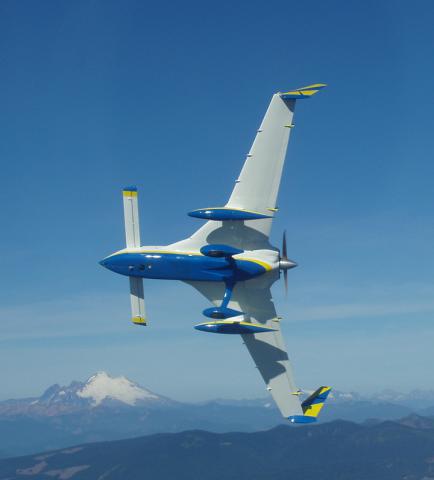

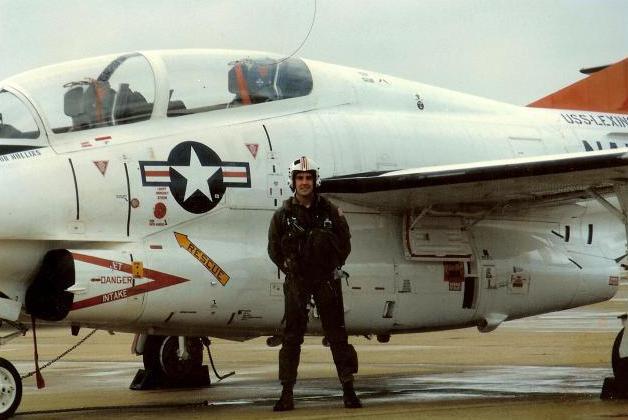
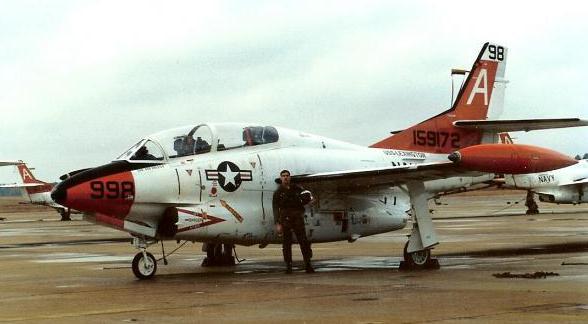
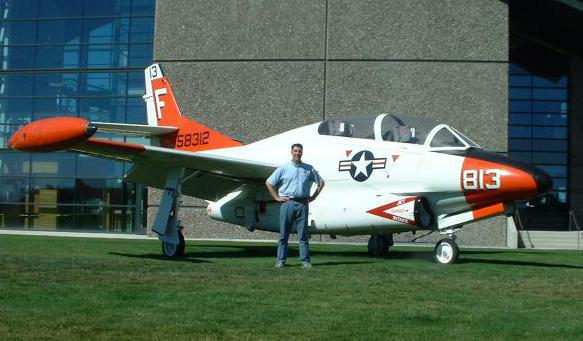
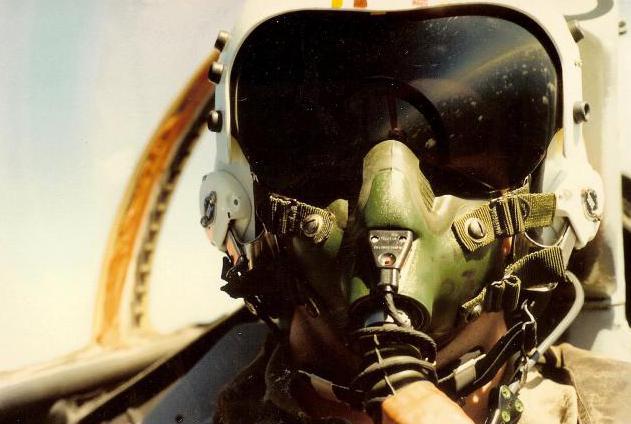
Some of my fondest memories of the Buckeye (also known as “Thunder Guppy” due to its less-than-flattering shape) come from my solos, when I would dive towards the hard deck to get maximum knots, pull the nose to the vertical, then gently apply a touch of rudder to create a slow roll. As I did this, I would imagine that I was piloting a Space Shuttle lifting off from the Cape. On one of my acro solos, I used up my entire time and fuel doing this maneuver over and over again.
Here is a plane designed for function, with form only given a little thought. Sort of pudgy, with a straight wing that doesn’t do justice to the speeds it could achieve, it was nonetheless a wonderful plane. My first jet, it taught me the complexities managing a jet, as well as the challenges of actual IFR, cross-country, carrier landings, formation, and an introduction to tactical flying. Although I doubt I would want to pull the g’s or unusual attitudes I did as a student 20+ years ago, I would love to own and fly a Buckeye. It was a simple, honest plane with great handling characteristics.
The T-2C was the Navy’s spin trainer because of its predictable handling characteristics in unusual attitudes. One of the best maneuvers that it could do was called the rudder triplet. Accelerate, pull the nose straight up, then apply a series of 3 successively more aggressive rudder inputs. As the third was applied, pull full aft stick and opposite aileron, effectively putting the plane into a Lomcevak while going straight up. This means that it was rotating simultaneously around all three axes.
If done right, you would run out of vertical speed while still tumbling, resulting in a small amount of fuel coming out of the dump mast to show you that you had truly run out of upward velocity. By keeping the controls at their stops, the plane would then enter into a spin, from which the T-2 could easily recover.
I really enjoyed this maneuver, as did my instructor, so he gave me an “incomplete”, which was normally given to students who got sick. In my case, it was so we could go back on another flight and do more of these maneuvers without his having to fear my getting sick.
Although I doubt I would want to pull the g’s or unusual attitudes I did as a student 20+ years ago, I would love to own and fly a Buckeye. It was a simple, honest plane with great handling characteristics.
Squadron patch for the VT19 “Fighting Attack Frogs”, a name that struck fear (and laughter) into the enemy
Me and the Buckeye at McMinnville, OR in 2008
The joy of solo flight in a jet – notice the reflection of the clouds thousands of feet below in the clear winter sunshine
Close up of me by a T-2 at NAS Meridian, MS Nov 1987
Posing by the powerful “Thunder Guppy” at NAS Meridian, MS Nov 1987
Sitting in the cockpit of a T-2C on Thanksgiving Day, 1987
|
Crew |
2 |
|
Length |
38 ft 8 in (11 m) |
|
Wingspan |
38 ft 2 in (11.6 m) |
|
Height |
14 ft 9 in (4.5 m) |
|
Wing area |
255 ft² (23.70 m²) |
|
Empty weight |
8,115 lb (3,652 kg) |
|
Max takeoff weight |
13,180 lb (5,931 kg) |
|
Powerplant |
2 × General Electric J85-GE-4 turbojets, 2,950 lbf (13 kN) each |
|
Maximum speed |
521 mph (834 km/h) |
|
Range |
910 mi (1,456 km) |
|
Service ceiling |
44,400 ft (13,500 m) |
